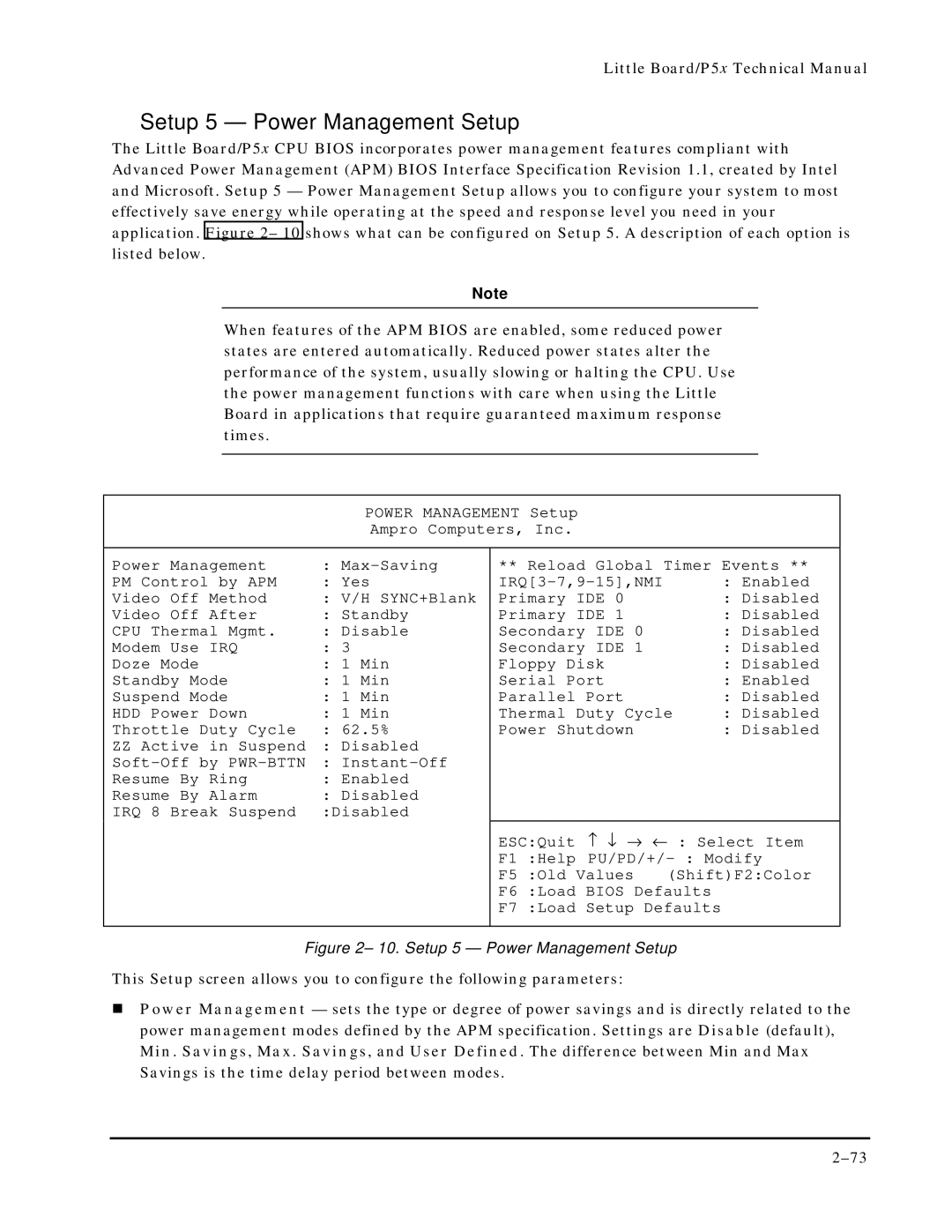
Little Board/P5x Technical Manual
Setup 5 — Power Management Setup
The Little Board/P5x CPU BIOS incorporates power management features compliant with Advanced Power Management (APM) BIOS Interface Specification Revision 1.1, created by Intel and Microsoft. Setup 5 — Power Management Setup allows you to configure your system to most effectively save energy while operating at the speed and response level you need in your application. Figure 2– 10 shows what can be configured on Setup 5. A description of each option is listed below.
Note
When features of the APM BIOS are enabled, some reduced power states are entered automatically. Reduced power states alter the performance of the system, usually slowing or halting the CPU. Use the power management functions with care when using the Little Board in applications that require guaranteed maximum response times.
POWER MANAGEMENT Setup
Ampro Computers, Inc.
Power Management | : | ** Reload Global Timer Events ** | |||
PM Control by APM | : Yes | : Enabled | |||
Video Off | Method | : V/H SYNC+Blank | Primary IDE 0 |
| : Disabled |
Video Off | After | : Standby | Primary IDE 1 |
| : Disabled |
CPU Thermal Mgmt. | : Disable | Secondary IDE 0 |
| : Disabled | |
Modem Use | IRQ | : 3 | Secondary IDE 1 |
| : Disabled |
Doze Mode |
| : 1 Min | Floppy Disk |
| : Disabled |
Standby Mode | : 1 Min | Serial Port |
| : Enabled | |
Suspend Mode | : 1 Min | Parallel Port |
| : Disabled | |
HDD Power | Down | : 1 Min | Thermal Duty Cycle | : Disabled | |
Throttle Duty Cycle | : 62.5% | Power Shutdown |
| : Disabled | |
ZZ Active | in Suspend | : Disabled |
|
|
|
: |
|
|
| ||
Resume By | Ring | : Enabled |
|
|
|
Resume By | Alarm | : Disabled |
|
|
|
IRQ 8 Break Suspend | :Disabled |
|
|
| |
|
|
| ESC:Quit ↑ ↓ → | ← | : Select Item |
|
|
| F1 :Help | ||
|
|
| F5 :Old Values | (Shift)F2:Color | |
|
|
| F6 :Load BIOS Defaults | ||
|
|
| F7 :Load Setup Defaults | ||
|
|
|
| ||
| Figure 2– 10. Setup 5 — Power Management Setup |
| |||
This Setup screen allows you to configure the following parameters:
!Power Management — sets the type or degree of power savings and is directly related to the power management modes defined by the APM specification. Settings are Disable (default), Min. Savings, Max. Savings, and User Defined. The difference between Min and Max Savings is the time delay period between modes.
